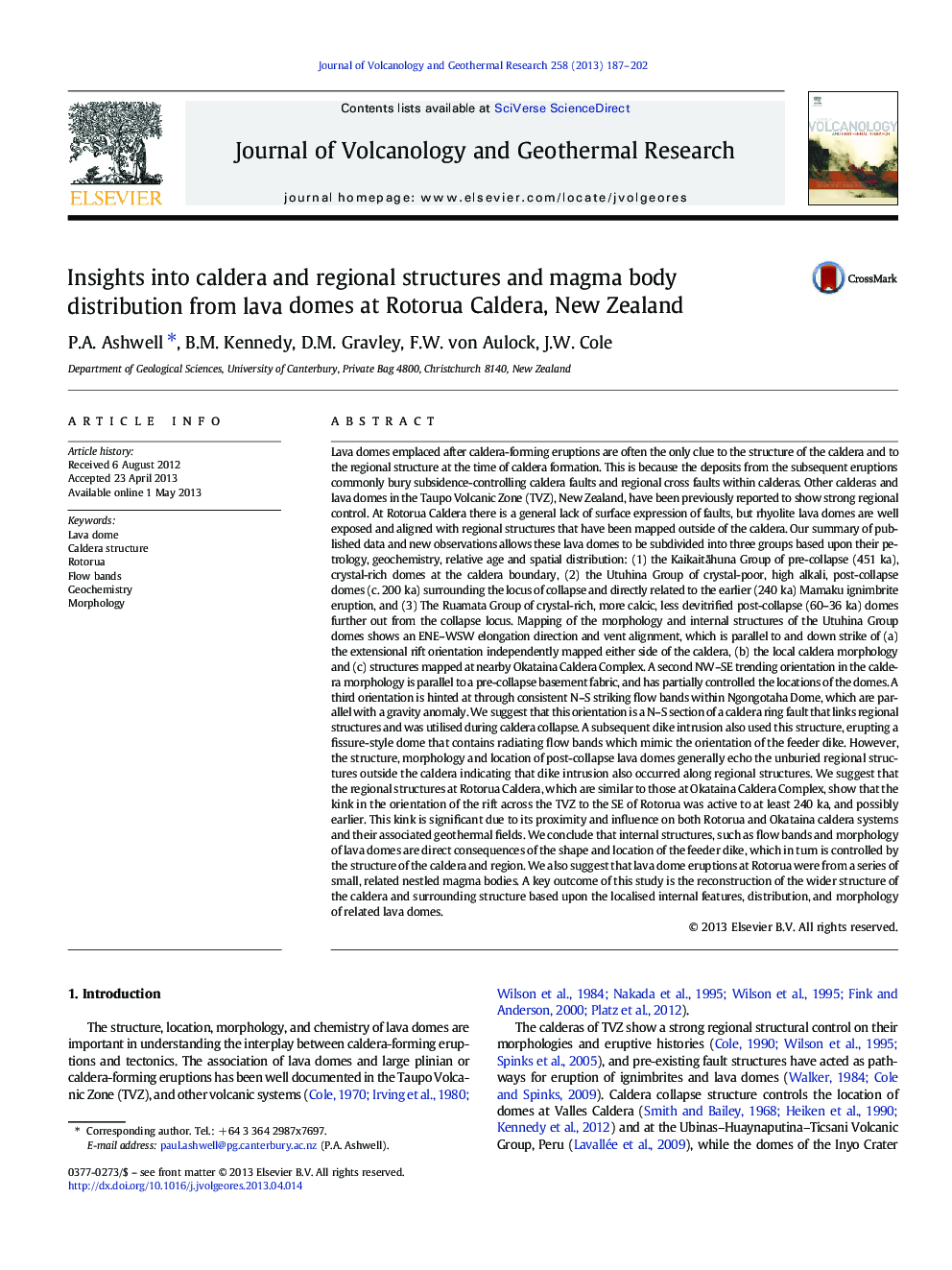| کد مقاله | کد نشریه | سال انتشار | مقاله انگلیسی | نسخه تمام متن |
|---|---|---|---|---|
| 4713160 | 1638363 | 2013 | 16 صفحه PDF | دانلود رایگان |
• Lava dome
• Caldera structure
• Regional structure
• Flow bands
• Rotorua
Lava domes emplaced after caldera-forming eruptions are often the only clue to the structure of the caldera and to the regional structure at the time of caldera formation. This is because the deposits from the subsequent eruptions commonly bury subsidence-controlling caldera faults and regional cross faults within calderas. Other calderas and lava domes in the Taupo Volcanic Zone (TVZ), New Zealand, have been previously reported to show strong regional control. At Rotorua Caldera there is a general lack of surface expression of faults, but rhyolite lava domes are well exposed and aligned with regional structures that have been mapped outside of the caldera. Our summary of published data and new observations allows these lava domes to be subdivided into three groups based upon their petrology, geochemistry, relative age and spatial distribution: (1) the Kaikaitāhuna Group of pre-collapse (451 ka), crystal-rich domes at the caldera boundary, (2) the Utuhina Group of crystal-poor, high alkali, post-collapse domes (c. 200 ka) surrounding the locus of collapse and directly related to the earlier (240 ka) Mamaku ignimbrite eruption, and (3) The Ruamata Group of crystal-rich, more calcic, less devitrified post-collapse (60–36 ka) domes further out from the collapse locus. Mapping of the morphology and internal structures of the Utuhina Group domes shows an ENE–WSW elongation direction and vent alignment, which is parallel to and down strike of (a) the extensional rift orientation independently mapped either side of the caldera, (b) the local caldera morphology and (c) structures mapped at nearby Okataina Caldera Complex. A second NW–SE trending orientation in the caldera morphology is parallel to a pre-collapse basement fabric, and has partially controlled the locations of the domes. A third orientation is hinted at through consistent N–S striking flow bands within Ngongotaha Dome, which are parallel with a gravity anomaly. We suggest that this orientation is a N–S section of a caldera ring fault that links regional structures and was utilised during caldera collapse. A subsequent dike intrusion also used this structure, erupting a fissure-style dome that contains radiating flow bands which mimic the orientation of the feeder dike. However, the structure, morphology and location of post-collapse lava domes generally echo the unburied regional structures outside the caldera indicating that dike intrusion also occurred along regional structures. We suggest that the regional structures at Rotorua Caldera, which are similar to those at Okataina Caldera Complex, show that the kink in the orientation of the rift across the TVZ to the SE of Rotorua was active to at least 240 ka, and possibly earlier. This kink is significant due to its proximity and influence on both Rotorua and Okataina caldera systems and their associated geothermal fields. We conclude that internal structures, such as flow bands and morphology of lava domes are direct consequences of the shape and location of the feeder dike, which in turn is controlled by the structure of the caldera and region. We also suggest that lava dome eruptions at Rotorua were from a series of small, related nestled magma bodies. A key outcome of this study is the reconstruction of the wider structure of the caldera and surrounding structure based upon the localised internal features, distribution, and morphology of related lava domes.
Journal: Journal of Volcanology and Geothermal Research - Volume 258, 15 May 2013, Pages 187–202
